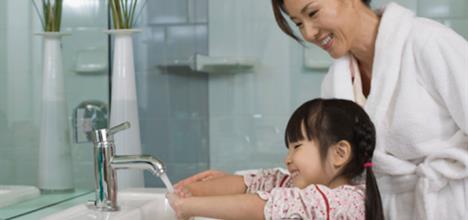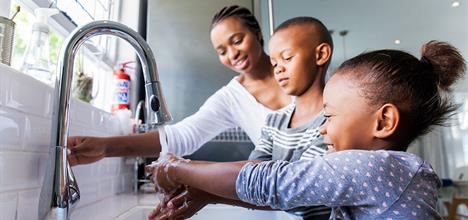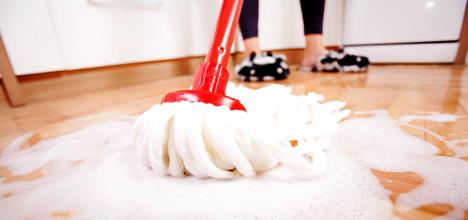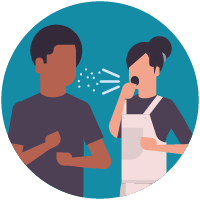Post # 188 – Our Changing World (COVID -19)
Dear Family
and Friends
Can you believe
all of the changes that have taken place in the world around us in the past
week??? I went to a convenient store that I regularly go to and t noticed a
note on the door about how they weren’t going to hand out cups for ice or water
anymore. I had my own cups, so I wasn’t too concerned. I went in to fill my
cups with ice as usual, but I was stopped before I got to the ice and told that
they were no longer allowing outside cups
to come into the store, but I could buy ice in one of their cups☹
Sadly I left
thinking what is going on in this world of ours☹ I tried
another store only to find the same note posted on their door as well. My granddaughter ans her friend went to Burger King, she said it was drive through only because of the corona virus. Many of the fast food restaurants are now drive through only in your areas as well☹
Then later on during the same day I get the news that the schools will be closed for the rest of this school year. What about those people and their jobs? What if my job becomes eliminated because my work gets closed??? We all still have our bills to pay☹ how does this make sense? Where will all of the children go, all day long?
Then later on during the same day I get the news that the schools will be closed for the rest of this school year. What about those people and their jobs? What if my job becomes eliminated because my work gets closed??? We all still have our bills to pay☹ how does this make sense? Where will all of the children go, all day long?

It will be like summer break every day for the
next eight weeks and then the real summer break begins😊
I worry about children being left alone with their siblings some of whom may be
old enough and responsible enough for the task of caring for their younger
siblings and some who are definitely not responsible enough for the task☹with
all of the craziness going on we do have reassuring words from our living
prophet😊
You can watch his message to all
people here: https://www.facebook.com/russell.m.nelson/videos/199840471336927/
The following
are some preventative measures that were given for members of the Church of
Jesus Christ of Latter-day Saints but I am sure these measures should be taken
by everyone as these were based on recommendations from the World Health Organization and
the United States Centers for Disease Control and Prevention :
Preventative Measures for
Members
For all Church members, there is wisdom in taking steps to
remain healthy during this cold and flu season. These precautions include*:
·
Regularly and thoroughly wash your hands with soap and water or
clean them with an alcohol-based hand rub.
·
Avoid close contact with people who are sick (this may include
avoiding shaking hands or other customary greetings).
·
Avoid touching your eyes, nose and mouth.
·
Stay home when you are sick.
·
Cover your cough or sneeze with a tissue, then throw the tissue in
the trash.
·
Maintain at least three feet (one meter) distance between yourself
and anyone who is coughing or sneezing.
·
Clean and disinfect frequently touched objects and surfaces using
a regular household cleaning spray or wipe.
·
Follow public health agency recommendations for using a face mask.
Local leaders should encourage members to follow these
guidelines.
https://newsroom.churchofjesuschrist.org/article/coronavirus-update-february-27-2020#missionary-work


About Coronavirus
Disease 2019 (COVID-19)
Coronavirus
Disease 2019
CDC is responding to an outbreak of respiratory
disease caused by a novel (new) coronavirus that was first detected in China
and which has now been detected in more than 100 locations internationally,
including in the United States.
If you develop emergency warning signs for
COVID-19 get medical attention immediately. Emergency warning signs
include*:
- Difficulty breathing or
shortness of breath
- Persistent pain or pressure in
the chest
- New confusion or inability to
arouse
- Bluish lips or face
*This list is not all inclusive. Please consult
your medical provider for any other symptoms that are severe or concerning.
alert icon
Older adults and people
who have severe underlying chronic medical conditions like heart or lung disease or diabetes seem to be at higher
risk for developing more serious complications from COVID-19 illness. Please
consult with your health care provider about additional steps you may be able
to take to protect yourself.
The President’s
Coronavirus Guidelines for America: 15 Days to Slow the Spreadpdf iconexternal icon
Know How it Spreads
·
There is currently no
vaccine to prevent coronavirus disease 2019 (COVID-19).
·
The virus is thought to
spread mainly from person-to-person.
o Between people who are in close contact with one another (within
about 6 feet).
o Through respiratory droplets produced when an infected person
coughs or sneezes.
·
These droplets can land
in the mouths or noses of people who are nearby or possibly be inhaled into the
lungs.
If the icon above doesn’t work for the President’s Guidelines for
America pdf you can find it here: https://www.whitehouse.gov/wp-content/uploads/2020/03/03.16.20_coronavirus-guidance_8.5x11_315PM.pdf
The following is where you can find a pdf about keeping your
workplace safe: https://www.cdc.gov/coronavirus/2019-ncov/downloads/workplace-school-and-home-guidance.pdf
Here you can find a pdf about Considerations
for School Closure: https://www.cdc.gov/coronavirus/2019-ncov/downloads/considerations-for-school-closure.pdf
Hand Washing: A Powerful Antidote to Illness
How many times have you and your child washed your hands today?


You might not have given it much thought. It’s
either part of your routine, done frequently without thinking, or maybe you
don’t do it much at all. But as your pediatrician may have told you, hand
washing may be the single most important act you and your child have for disease prevention.
Making It Habit
As early as possible, get your child into the
habit of washing her hands often and thoroughly. All day long, your child is
exposed to bacteria and viruses—when touching a playmate, sharing toys, or
petting the cat. Once her hands pick up these germs, she can quickly infect herself
by:
- Rubbing
her eyes
- Touching
her nose
- Placing
her fingers in her mouth
The whole process can happen in seconds, and
cause an infection that can last for days, weeks, or even longer.
When To Wash
Hand washing can stop the spread of infection.
The key is to encourage your child to wash her hands throughout the day. For
example, help her or remind her to wash her hands:
- Before
eating (including snacks)
- After
a trip to the bathroom
- Whenever
she comes in from playing outdoors
- After
touching an animal like a family pet
- After
sneezing or coughing if she covers her mouth
- When
someone in the household is ill
Studies on hand
washing in public restrooms show
that most people don't have very good hygiene habits. “Hand washing" may
mean just a quick splash of water and perhaps a squirt of soap, but not
nearly enough to get their hands clean.
 |
Steps to Proper Hand Washing
So what does a thorough hand washing involve?
The Centers for Disease Control and Prevention (CDC) recommends the following
steps:
- Wet
your child’s hands.
- Apply
clean bar soap or liquid soap to the hands, and then place the bar on a
rack where it can drain before the next hand washing.
- Rub
the hands vigorously together. Scrub every surface completely.
- Keep
rubbing and scrubbing for 20 seconds to effectively remove the germs.
- Rinse
the hands completely, then dry them.
About Antibacterial Soaps
Drugstore shelves are full of trendy
antibacterial soaps, but studies have shown that these antibacterial products
are no better at washing away dirt and germs than regular soap. Some infectious
disease experts have even suggested that by using antibacterial soaps, you may
actually kill off normal bacteria and increase the chances that resistant
bacteria may grow.
The best solution is to wash your child’s
hands with warm water and ordinary soap that does not contain antibacterial
substances (eg, triclosan). Regular use of soap and water is better than using
waterless (and often alcohol-based) soaps, gels, rinses, and hand rubs when
your child’s hands are visibly dirty (and with children, there usually is dirt
on the hands!). However, when there is no sink available (eg, the car), hand
rubs can be a useful alternative.
How Long to Wash
Keep in mind that although 20 seconds of
hand washing sounds like an instant, it is much longer than you think. Time
yourself the next time you wash your hands. Watch your child while she’s
washing her hands to make sure she’s developing good hygiene behaviors. Pick a
song that lasts for 20 seconds and sing it while you wash. Encourage your
child to wash her hands not only at home, but also at school, at friends’
homes, and everywhere else. It’s an important habit for her to get into, and
hopefully one that’s hard to break.
Last Updated 3/11/2020
Source Immunizations
&Infectious
Diseases: An Informed Parent's Guide (Copyright © 2006 American Academy of
Pediatrics)
The information
contained on this Web site should not be used as a substitute for the medical
care and advice of your pediatrician. There may be variations in treatment that
your pediatrician may recommend based on individual facts and circumstances.
Germ Prevention Strategies
Hygiene Strategies
 When your child or another family member has
a cold or cough, there are extremely
important steps in addition to frequent hand washing that can lower the risk of
spreading the infection to others. Some experts call these strategies respiratory
hygiene, and they can be very effective if followed carefully. For example, to
keep your sick child from blowing secretions into the air, where they can land
on other people or on toys and other objects:
When your child or another family member has
a cold or cough, there are extremely
important steps in addition to frequent hand washing that can lower the risk of
spreading the infection to others. Some experts call these strategies respiratory
hygiene, and they can be very effective if followed carefully. For example, to
keep your sick child from blowing secretions into the air, where they can land
on other people or on toys and other objects:- Encourage her to cough or
sneeze into a tissue or, if a tissue isn’t available, onto her sleeve.
- Discourage your child from
covering her mouth with her hands while coughing or sneezing because this
will leave germs on the hands that can be spread by touching other people
or objects. Most often, germs are spread by the hands, not through the
air.
- Throw away tissues immediately
after each use, putting them in a nearby wastebasket or other container.
- Once your child is old enough,
teach her how to blow her nose into a tissue.
- Don’t allow your child to share pacifiers, drinking cups, eating
utensils, towels, or toothbrushes whether she is sick.
Clean & Disinfect
Housecleaning may not be the most enjoyable
activity in your day. If you spend a few minutes killing germs, especially
those in the kitchen and bathroom, it can go a long way toward keeping
your child healthy.
After you’ve prepared a meal, wash the kitchen
counters with hot, soapy water and disinfect them using a household bleach
solution or other disinfectant. Infectious bacteria can thrive
in foods like uncooked beef and chicken. In the bathroom, use the same cleaning
and disinfecting routine on the toilet, sink, and other surfaces. This is
especially important when a family member is sick with an infectious disease,
particularly one that causes diarrhea. Also, frequently clean the area
where you change diapers, including the changing table. (Be sure you keep the
bleach and all cleaning products out of the reach of infants and young
children.) Avoid changing diapers in areas where food is being
prepared or consumed.
Some germs can survive and thrive for hours
unless you take steps to wipe them away. After using soap and disinfectant, dry
the cleaned surfaces with paper towels or a clean cloth. After you clean up, be
sure to wash your own hands.


Handle Food Safely
Food can become contaminated with bacteria and other
germs that can cause stomach pain, vomiting, and worse. To limit problems:
- Make sure your hands are washed
and the kitchen surfaces are clean before and after preparing meals.
- Clean your cutting board or
kitchen surface after preparing raw meats for cooking and clean before
using the surface to prepare any food that is not to be cooked such as
salads, fruits, or vegetables.
- Cook ground meat all the way
through.
- Wash raw vegetables and fruit
thoroughly before eating.
- Avoid eating raw or undercooked
eggs.
- Cook frozen food right after
it’s defrosted.
- Clean utensils frequently
during food preparation, washing them after they’re used on raw foods and
before using them again on cooked foods.
- When it comes to leftovers,
store them properly and get them into the refrigerator or freezer right
away to prevent germ growth. Don’t leave perishable items out for more
than a couple hours.
Collectively, Americans are sick more than 4
billion days a year—and many of those sick days can be prevented. If you follow
the guidelines, you will go a long way toward helping your child, as well as
the rest of your household, have fewer infections; fewer missed days of child
care, school, and work; less frequent visits to the doctor; and lower medicine
costs.
Additional Information:
- Hand Washing: A Powerful Antidote to Illness
- Cleaners, Sanitizers & Disinfectants
- Preventing the Spread of Illness in Child Care or
School
- Preventing the Flu: Resources for Parents &
Child Care Providers
- Taking the Mystery Out of Toothbrush Storage
Last Updated 1/28/2020
Source Immunizations
&Infectious
Diseases: An Informed Parent's Guide (Copyright © 2006 American Academy of
Pediatrics)
The information
contained on this Web site should not be used as a substitute for the medical
care and advice of your pediatrician. There may be variations in treatment that
your pediatrician may recommend based on individual facts and circumstances.
Cleaners, Sanitizers & Disinfectants


Housecleaning may not be the most enjoyable activity in your
day, but a few minutes killing germs can go a long way toward keeping your
family healthy.
- Routine
cleaning with detergent or soap
and water removes dirt and grime from surfaces (ex: floors, walls, carpet,
windows).
- Sanitizing removes
dirt and small amounts of germs. Some items and surfaces are cleaned to
remove dirt then sanitized (ex: bathrooms,
counters, toys, dishes, silverware).
- Some
items and surfaces require the added step of disinfecting after
cleaning to kill germs on
a surface (ex: changing
tables, sinks, counters, toys).
Use Caution Around Cleaners, Disinfectants & Sanitizers
Although chemical disinfectants and sanitizers
are essential to control communicable diseases, they are potentially hazardous
to children, particularly if the products are in concentrated
form.
- Products
must be stored in their original labeled containers and in places
inaccessible to children.
- Diluted
disinfectants and sanitizers in spray bottles must be labeled and stored
out of the reach of children.
- Solutions
should not be sprayed when children are nearby to avoid inhalation and
exposing skin and eyes.
- Before
using any chemical, read the product label and manufacturer’s material
safety data sheet.

Questions to Consider When Selecting a Disinfectant:
- Is
it inactivated by organic matter?
- Is
it affected by hard water?
- Does
it leave a residue?
- Is
it corrosive?
- Is
it a skin, eye, or respiratory irritant?
- Is
it toxic (by skin absorption, ingestion, or inhalation)?
- What
is its effective shelf life after dilution?
About Bleach:
Household bleach (chlorine as sodium
hypochlorite) is active against most microorganisms, including bacterial spores
and can be used as a disinfectant or sanitizer, depending on its concentration.
Bleach is available at various strengths:
- Household
or laundry bleach is a solution of 5.25%, or 52 500 parts per million
(ppm), of sodium hypochlorite.
- The
“ultra” form is only slightly more concentrated and should be diluted and
used in the same fashion as ordinary strength household bleach.
- Higher-strength
industrial bleach solutions are not appropriate to use in child care
settings.
Household bleach is effective, economical,
convenient, and available at grocery stores. It can be corrosive to some metal,
rubber, and plastic materials. Bleach solutions gradually lose their strength,
so fresh solutions must be prepared daily, and stock solutions must be replaced
every few months. Bleach solution should be left on for at least 2 minutes
before being wiped off. It can be allowed to dry, because it leaves no residue.
Household bleach can be used to sanitize dishes and eating utensils. The
concentration of chlorine used in the process is much less than that used for
disinfecting other objects.
 Cleaners Containing Disinfectants:
Cleaners Containing Disinfectants:
By separating out the cleaning and
disinfecting processes, you will reduce the amount of disinfectant chemicals
used.
- Soiled
objects or surfaces will block the effects of a disinfectant or sanitizer.
Therefore, proper disinfection or sanitizing of a surface requires that
the surface be cleaned (using soap or detergent and a water rinse) before
disinfecting or sanitizing.
- Bleach
(the sanitizer/disinfectant) and ammonia (the cleaner) should never be
mixed, because the mixture produces a poisonous gas.
- Not
all items and surfaces require sanitizing or disinfecting. See the Cleaning, Sanitizing, and Disinfecting
Frequency Table from the National Association for the
Education of Young Children (NAEYC) for more information.
Alternative/Less Toxic Homemade Cleaning Products:
Alternative or less toxic cleaners are made
from ingredients such as baking soda, liquid soap, and vinegar. Many of the
ingredients are inexpensive, so you may save money over time. However they may
require more “elbow grease,” which means you may have to scrub harder.
Although the ingredients in homemade cleaners
(e.g., baking soda for scrubbing, vinegar for cutting grease) are safer, not
all are nontoxic. Treat them as you would any other cleaner, with caution.
Additional Resources:
Last Updated 10/8/2019
Source Adapted from Pediatric
Environmental Health, 3rd Edition (Copyright © American Academy of Pediatrics
2011)
The information
contained on this Web site should not be used as a substitute for the medical
care and advice of your pediatrician. There may be variations in treatment that
your pediatrician may recommend based on individual facts and circumstances.
COVID-19 is an emerging,
rapidly evolving situation.
Get the latest public health information from CDC: https://www.coronavirus.gov .
Get the latest research from NIH: https://www.nih.gov/coronavirus.
Get the latest public health information from CDC: https://www.coronavirus.gov .
Get the latest research from NIH: https://www.nih.gov/coronavirus.
Cases in U.S. Updated March 18, 2020


Alabama 39
|
Hawaii 13
|
Massachusetts 218
|
New Mexico 23
|
South Dakota 11
|
Alaska 1-5
|
Idaho 1-5
|
Michigan 65
|
New York 2601
|
Tennessee 73
|
Arizona 18
|
Illinois 160
|
Minnesota 77
|
North Dakota 1-4
|
Texas 64
|
Arkansas 24
|
Indiana 30
|
Mississippi 34
|
North Carolina 63
|
Utah 41
|
California 596
|
Iowa 29
|
Missouri 13
|
Ohio 67
|
Vermont 10
|
Colorado 188
|
Kansas 16
|
Montana 11
|
Oklahoma 19
|
Virginia 65
|
Connecticut 68
|
Kentucky 26
|
Nebraska 21
|
Oregon 65
|
Washington 930
|
Delaware 15
|
Louisiana 189
|
Nevada 55
|
Pennsylvania 96
|
West Virginia 1-5
|
Florida 195
|
Maine 32
|
New Hampshire 26
|
Rhode Island 23
|
Wisconsin 88
|
Georgia 178
|
Maryland 85
|
New Jersey 267
|
South Carolina 47
|
Wyoming
11
|
I hope the above chart I made is useful for some of you and that this information has been helpful for each of you. It may do you well to gather together with your family members and listen to the living prophet’s words of comfort during this stressful time in our world.
By this evening I found out that our YMCA
in a neighboring town has shut down until further notice and ours has shut down
all except the childcare programs and the fitness programs. Such scary times
for a lot of people we do not need to be scared or afraid if we believe in
Jesus Christ and put our trust in Him and our Heavenly Father😊 Until my
next post make it a good week😊

No comments:
Post a Comment